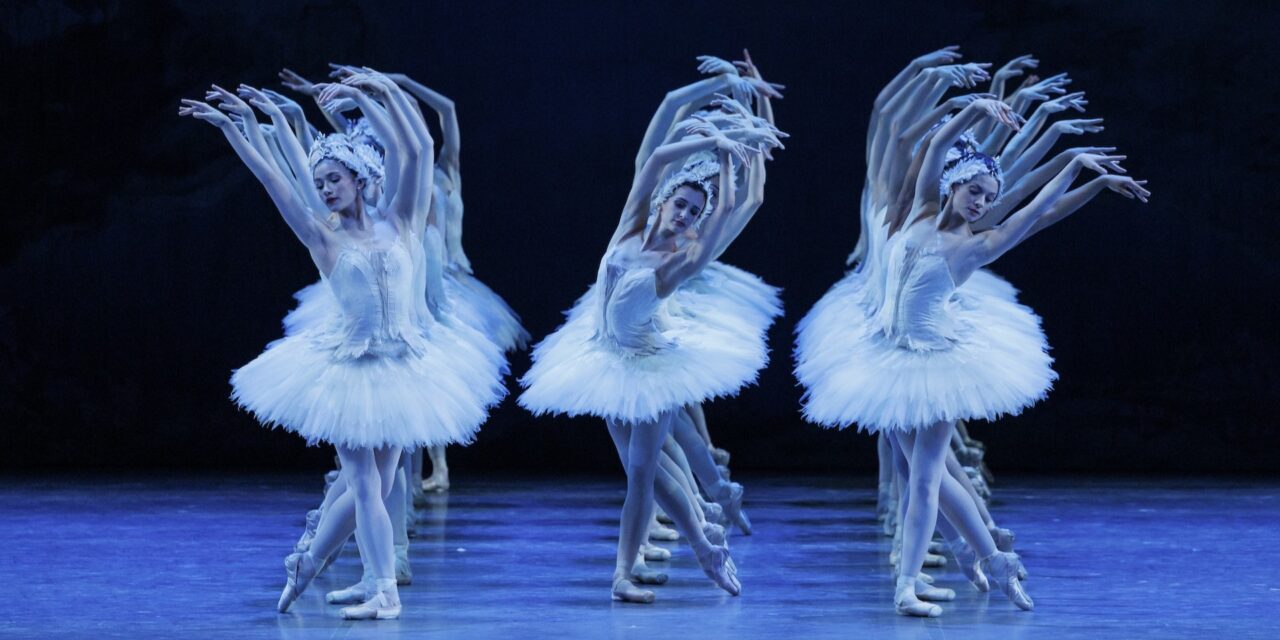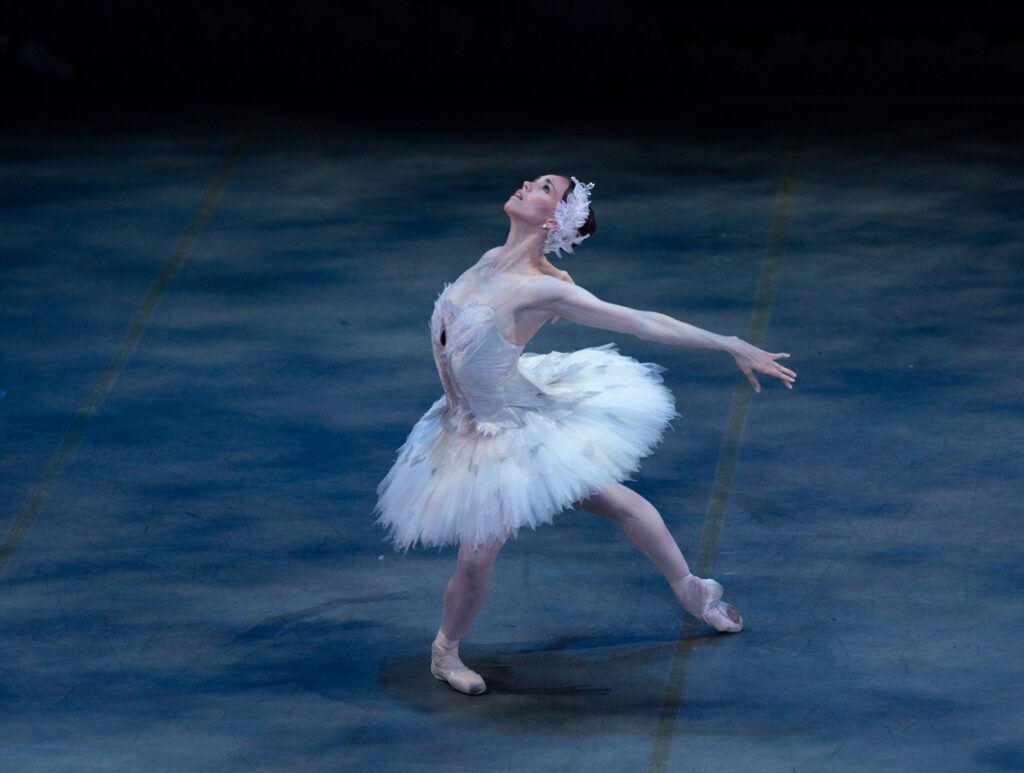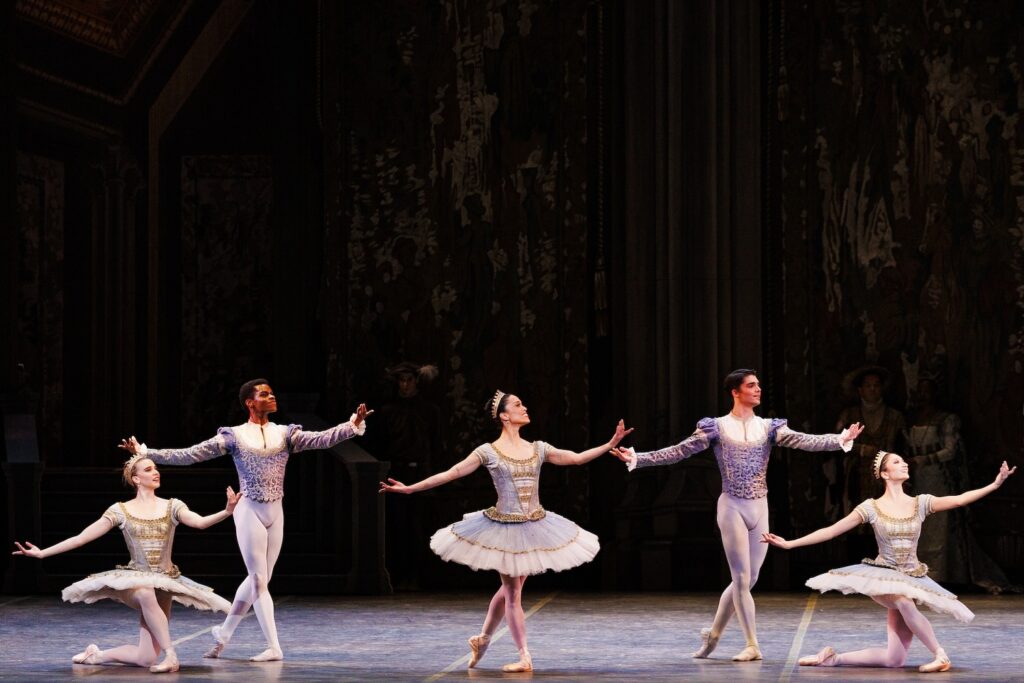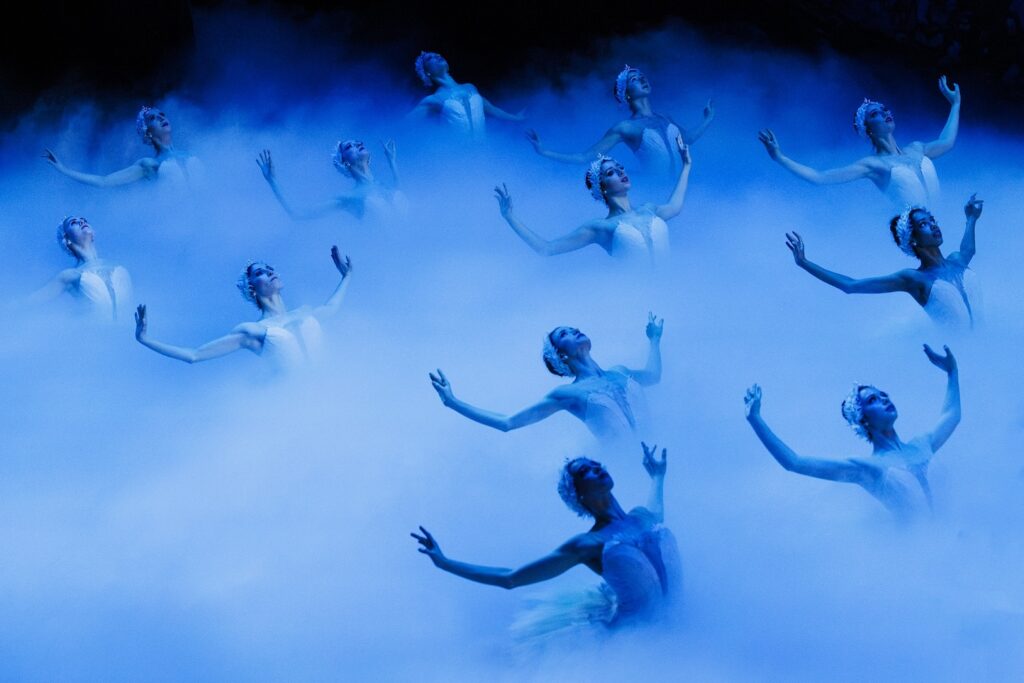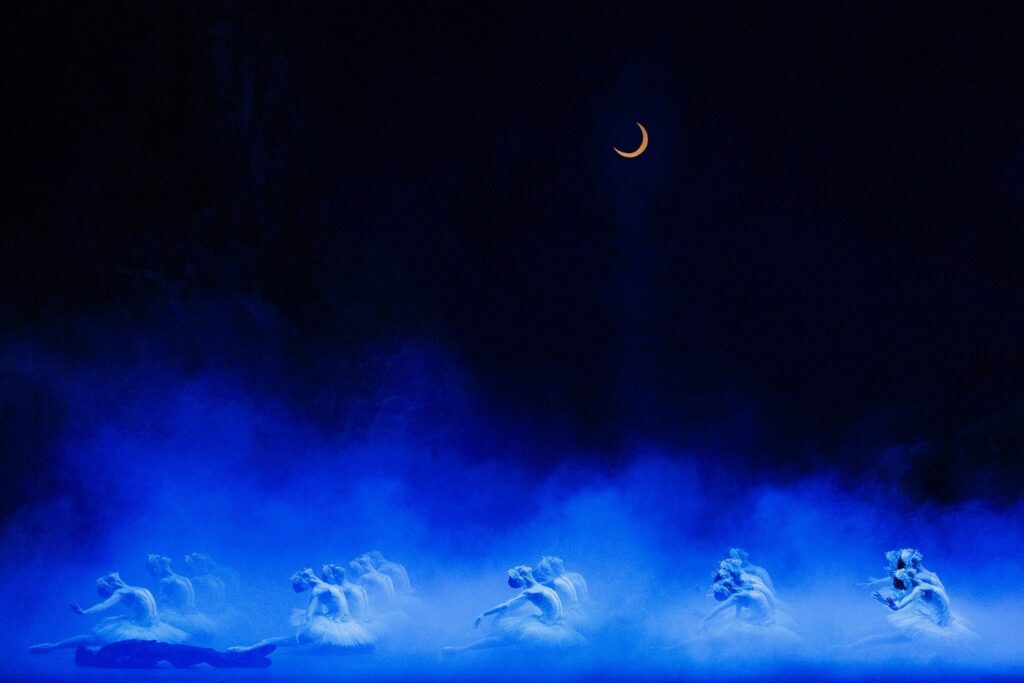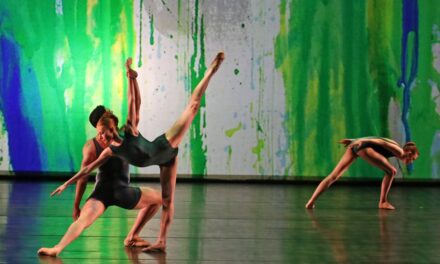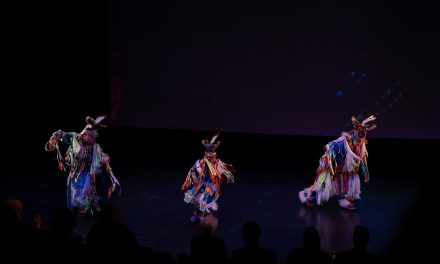On June 7, 2025, Glorya Kaufman Presents Dance at The Music Center welcomed Boston Ballet in Mikko Nissinen’s full-length “Swan Lake” – a grand and ambitious production – featuring a full orchestra, elaborate sets and costumes, and what appeared to be at least 55 to 60 dancers filling the Dorothy Chandler Pavilion stage.

Boston Ballet – Viktorina Kapitonova and Lasha Khozashvili in Mikko Nissinen’s “Swan Lake” – Photo by Rosalie O’Connor.
These days, it is rare enough to see a full-length, highly produced, “Swan Lake” in Southern California, and even rarer to see two separate performances of this classic in a single week. But this year, audiences were treated to a remarkable pairing: first, Alexei Ratmansky’s version for Miami City Ballet at the Segerstrom Center, and now Boston Ballet’s interpretation under the direction of Mikko Nissinen.
Nissinen, appointed Artistic Director of Boston Ballet and Boston Ballet School in 2001, was born in Helsinki, Finland, and trained at both the Finnish National Ballet School and the Kirov Ballet School in St. Petersburg. His “Swan Lake” presents a rich and reverent classical staging, honoring the ballet’s storied tradition and breathing new dramatic life into this sumptuous production.
Seeing Miami City Ballet last week and Boston Ballet this week felt like a true feast—two artistic visions of the same legendary tale, each with its own strengths and revelations.
Boston Ballet can, however, boast a most transcendent Swan Queen in Viktorina Kapitonova, whose portrayal of Odette, the White Swan, was both breathtaking and deeply moving. Her remarkable artistry, expressive arms, and fluid, undulating movement evoked memories of the great Maya Plisetskaya. Kapitonova didn’t merely dance the role—she became Odette, embodying purity and spectral grace with every phrase. Her gorgeous feet and legs, combined with a refined strength of form, allowed the audience to surrender fully to her artistry. Yet she never lost herself in technique alone; she brought emotional depth and intelligence to her interpretation, shaping the role anew.
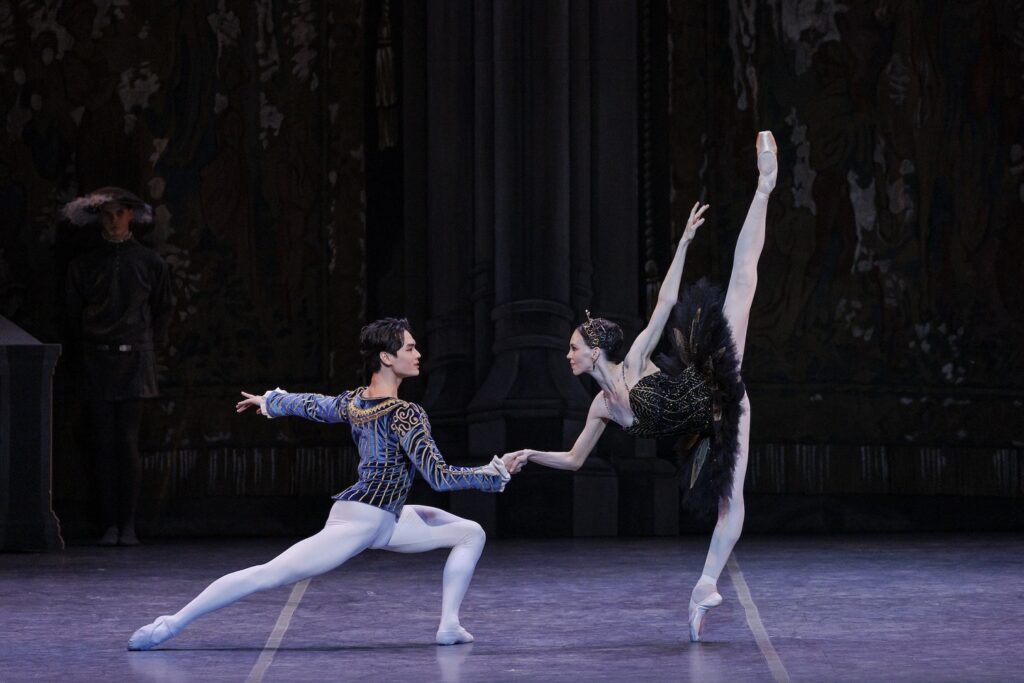
Boston Ballet – Sangmin Lee and Viktorina Kapitonova in Mikko Nissinen’s “Swan Lake” – Phto by Theik Smith.
Sangmin Lee, as Prince Siegfried, initially seemed restrained, even distant. Though he was a strong and secure partner – executing the overhead lifts with elegance and ease- his emotional connection to Odette felt innocuous, lacking the depth and urgency that define their tragic love. His portrayal never reached the romantic poignancy of Stanislav Olshanskyi’s Siegfried in Miami City Ballet’s version, where vulnerability and longing infused every gesture. However, in Act III, Lee came alive. He revealed impressive technical prowess with buoyant jumps, crisp turns, and a stronger command of the stage – holding his own alongside Kapitonova in her sterling Black Swan variation and commanding 32 fouetté turns. It was in these moments that Lee showed flashes of the princely presence the role demands.
In contrast, Lasha Khosashvili’s Von Rothbart was a standout—transforming a role often limited to cape-flaring theatrics into a riveting and seductive leading figure. His magnetism and charisma made him not just the villain, but a commanding and dynamic force on stage.
In this version, compared to Ratmansky’s, the corps in Act I, felt oddly subdued, almost invisible, save for the delightful Pas de Trois danced by Ji Young Chae, Chisako Oga, and Yue Shi. Their boundless jumps, sharp turns, and seamless partnering brought needed sparkle and joy to the moment.
Then, Act II, “The Lake,” the company took flight as fog rolled across the stage and the full corps of swan maidens emerged like spirits from the bog. The stage transformed into a dreamscape, with rows of shimmering white tutus gliding in hypnotic patterns. Here, Boston Ballet’s corps reminded us of the great classical companies of the past—precise, powerful, and poetic.
Lauren Herfindahl and Sage Humphries, soon revealed as the two lead swans, began with a lilting pas de deux that set the tone for the exquisite formations to come. Then the beloved “Four Swans”—traditionally called the Cygnets—danced to near perfection by Evelina Godunova, Chenxin Liu, Courtney Nitting, and Alexis Workowski. With synchronized timing and uncanny precision, they seemed almost cloned in movement, a joy to watch.
Act III brought us to the Castle Ballroom, where Siegfried must choose a bride among princesses from across the land. Here, we were treated to the expectant maidens, gently vying for position. The spirited character dances then added color and cultural flair to the moment. The Spanish, Neapolitan, Hungarian and Polish variations were performed with enthusiasm and vigor, though at times the stylistic depth that elevates character work from entertaining to enthralling lacked the depth and maturity of the traditional fire.
As the drama reached its tragic conclusion in Act IV, the swan maidens reappeared through rising fog, prompting an audible gasp from the audience. The haunting visual of ghostly white figures gliding across the darkened stage cast a spell. The corps rose to the occasion once more, delivering a finale that was both ethereal and heart-wrenching.
Boston Ballet’s “Swan Lake”, under Nissinen’s vision, was a gift to Los Angeles audiences—a lavish, classically grounded production enriched by a transcendent Odette, a compelling antagonist, and a corps that shimmered with unified purpose.
In a city more accustomed to premieres and experimentation, this production was a welcome return to classical grandeur—reminding us that sometimes the most radical thing is to do the traditional exquisitely well.
To learn more about the Boston Ballet, please visit their website.
For more information about the Glorya Kaufman Presents Dance at the Music Center, please visit their website.
Written by Joanne DiVito for LA Dance Chronicle.
Featured image: Boston Ballet in Mikko Nissinen’s “Swan Lake” – Photo by Theik Smith.

